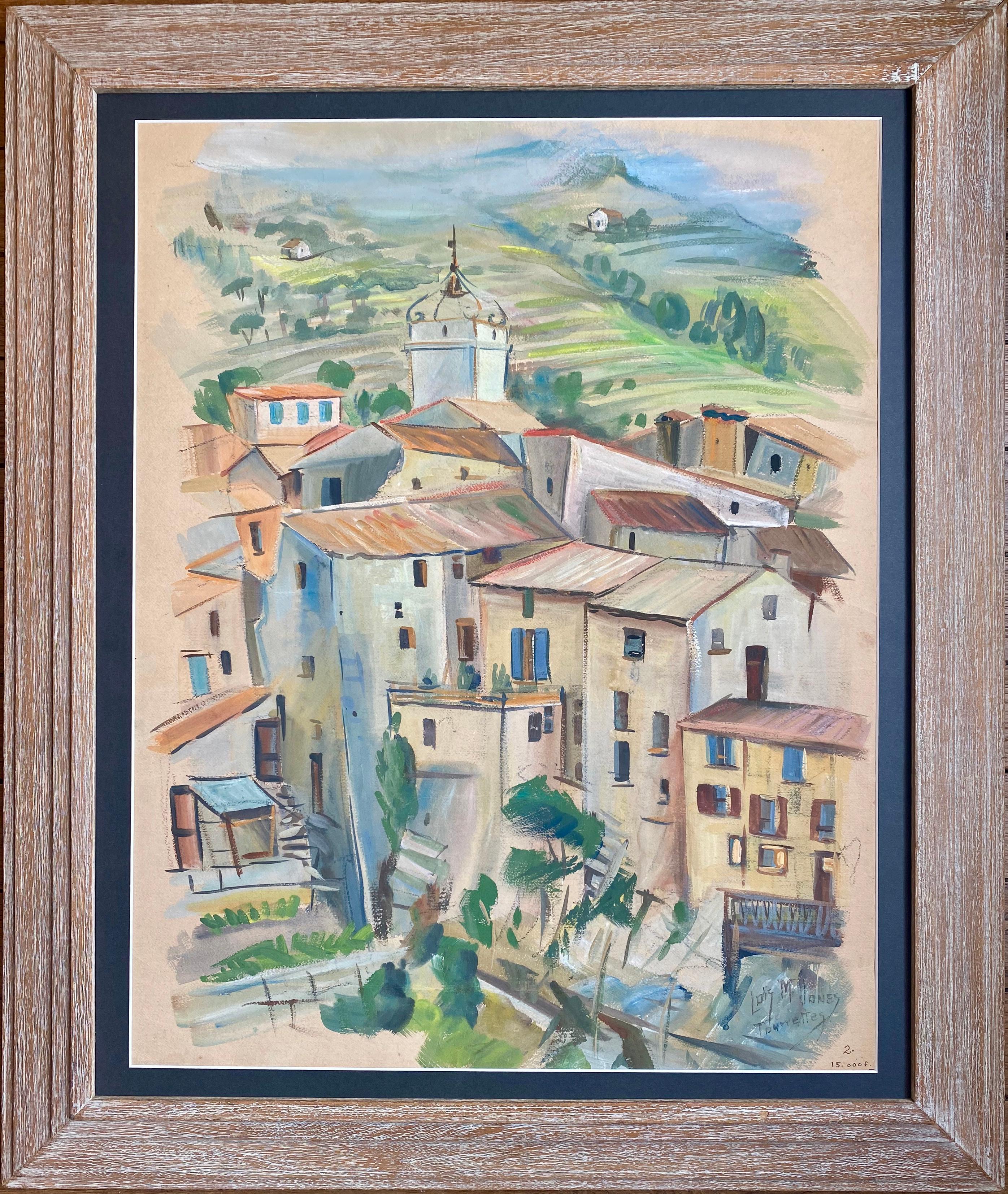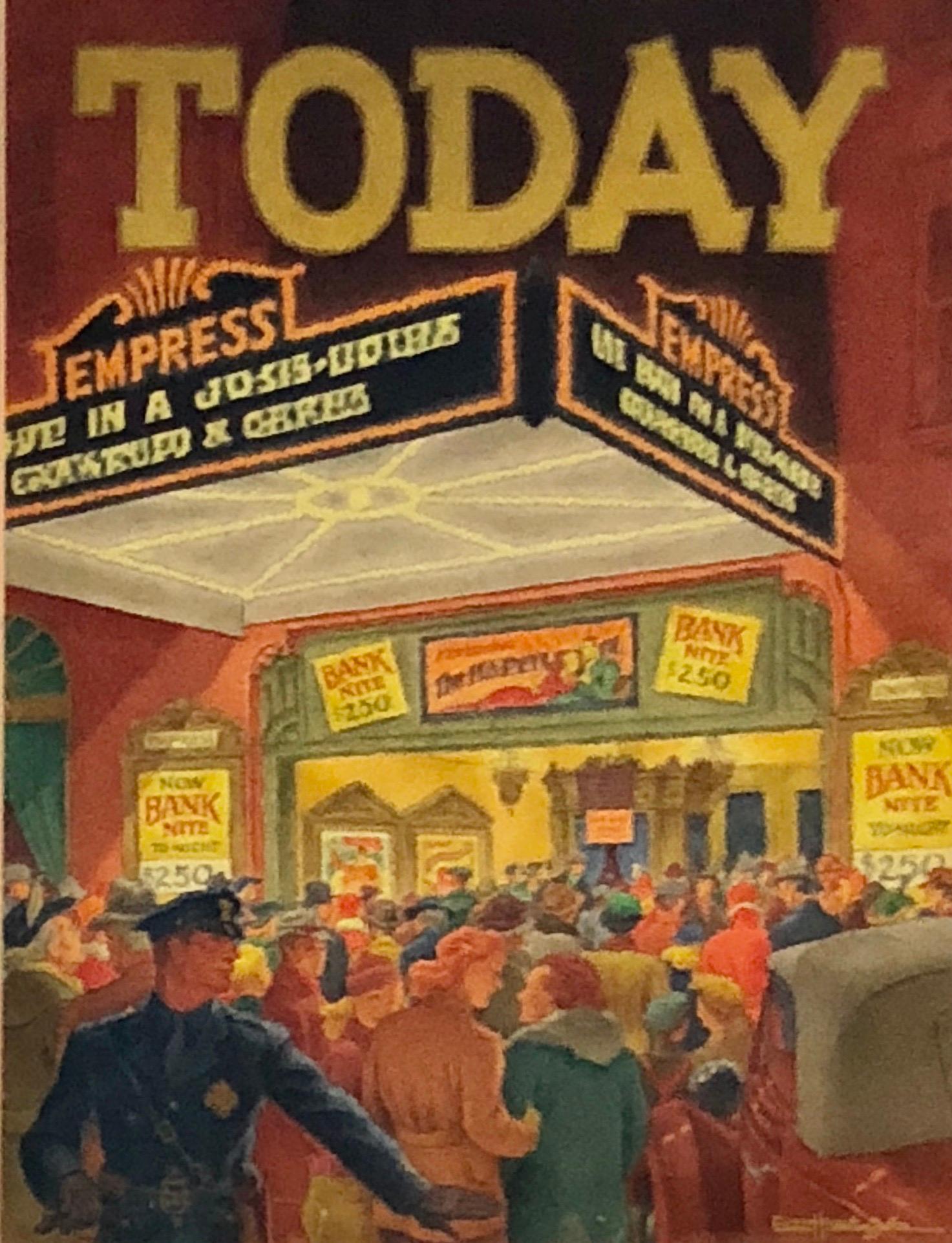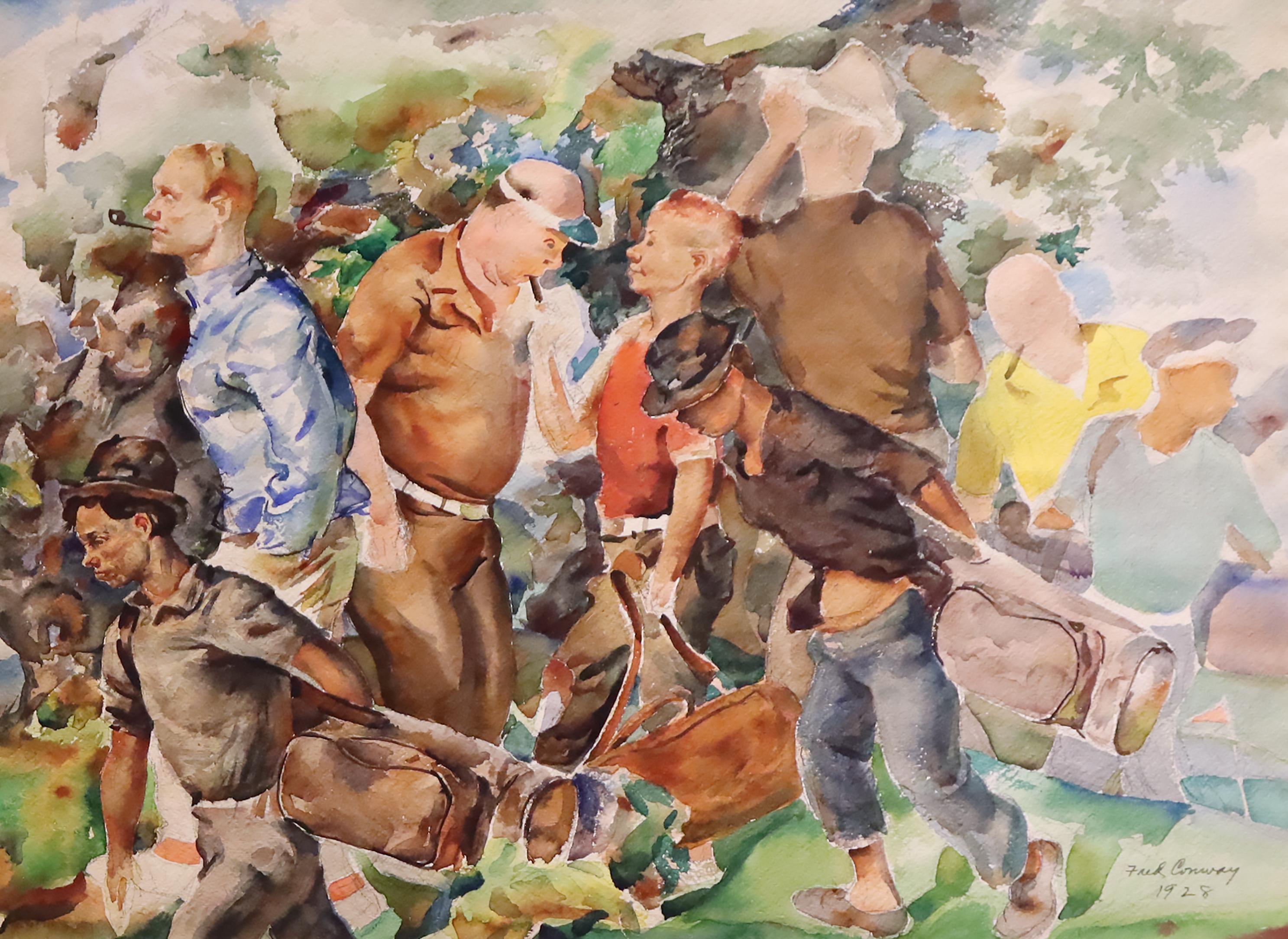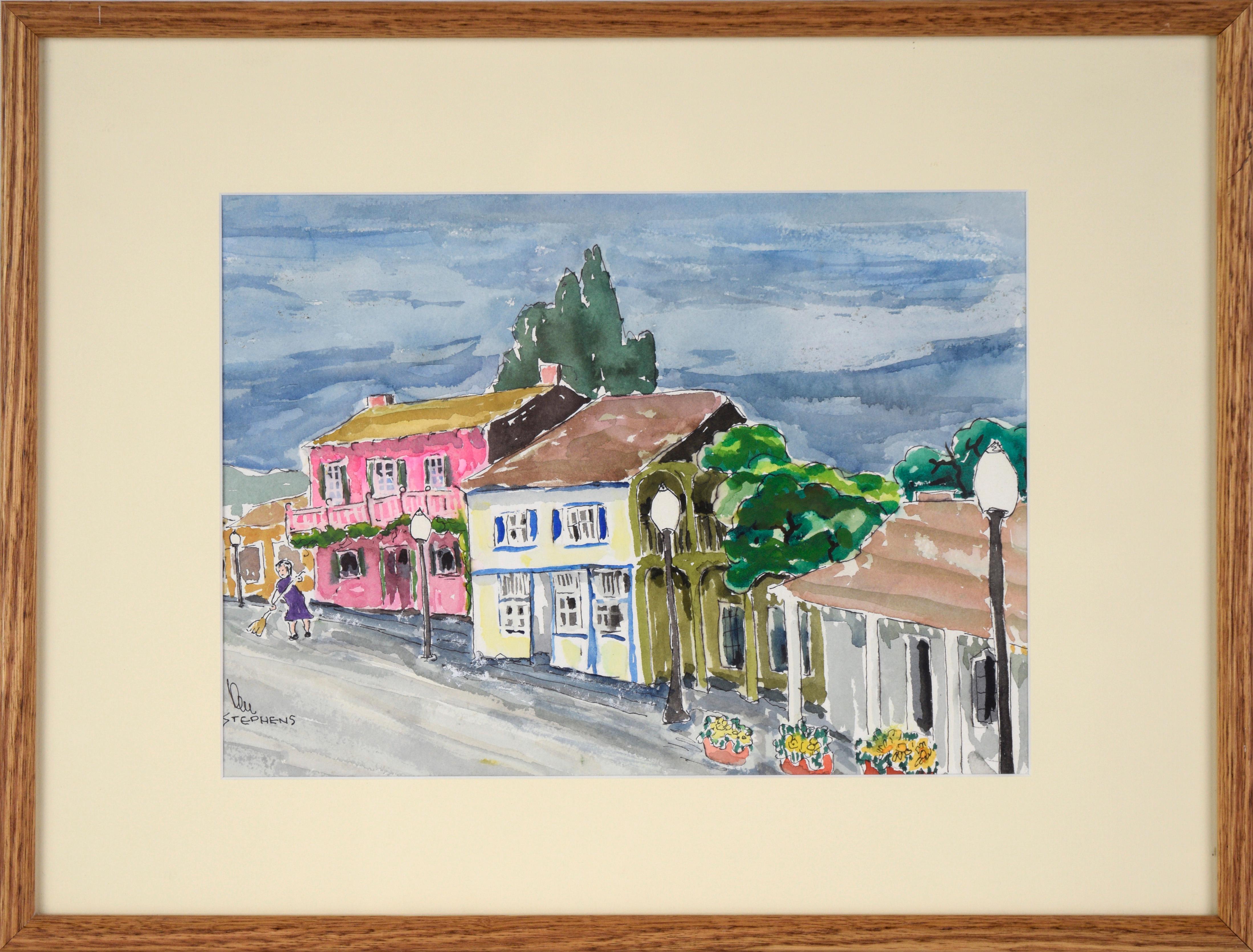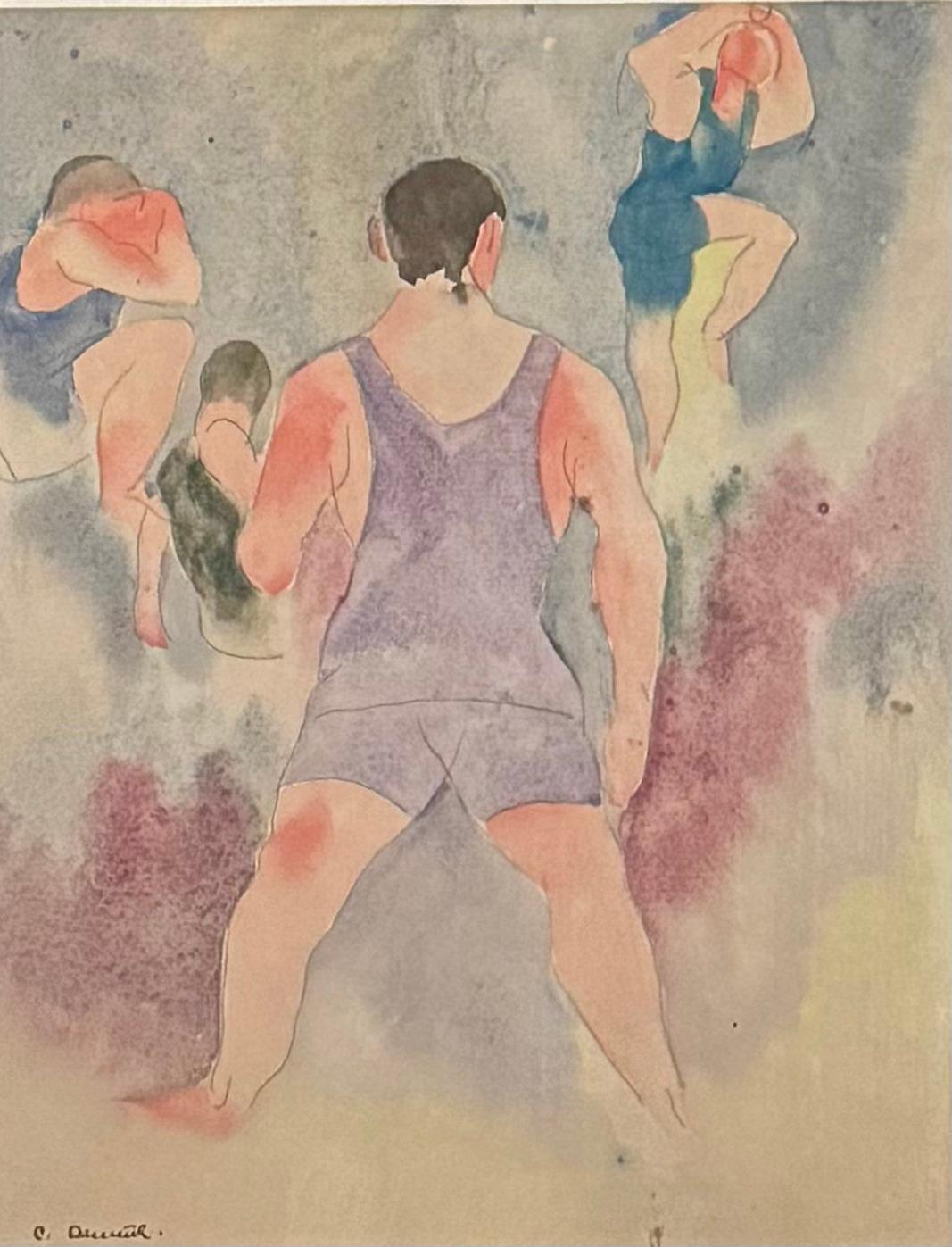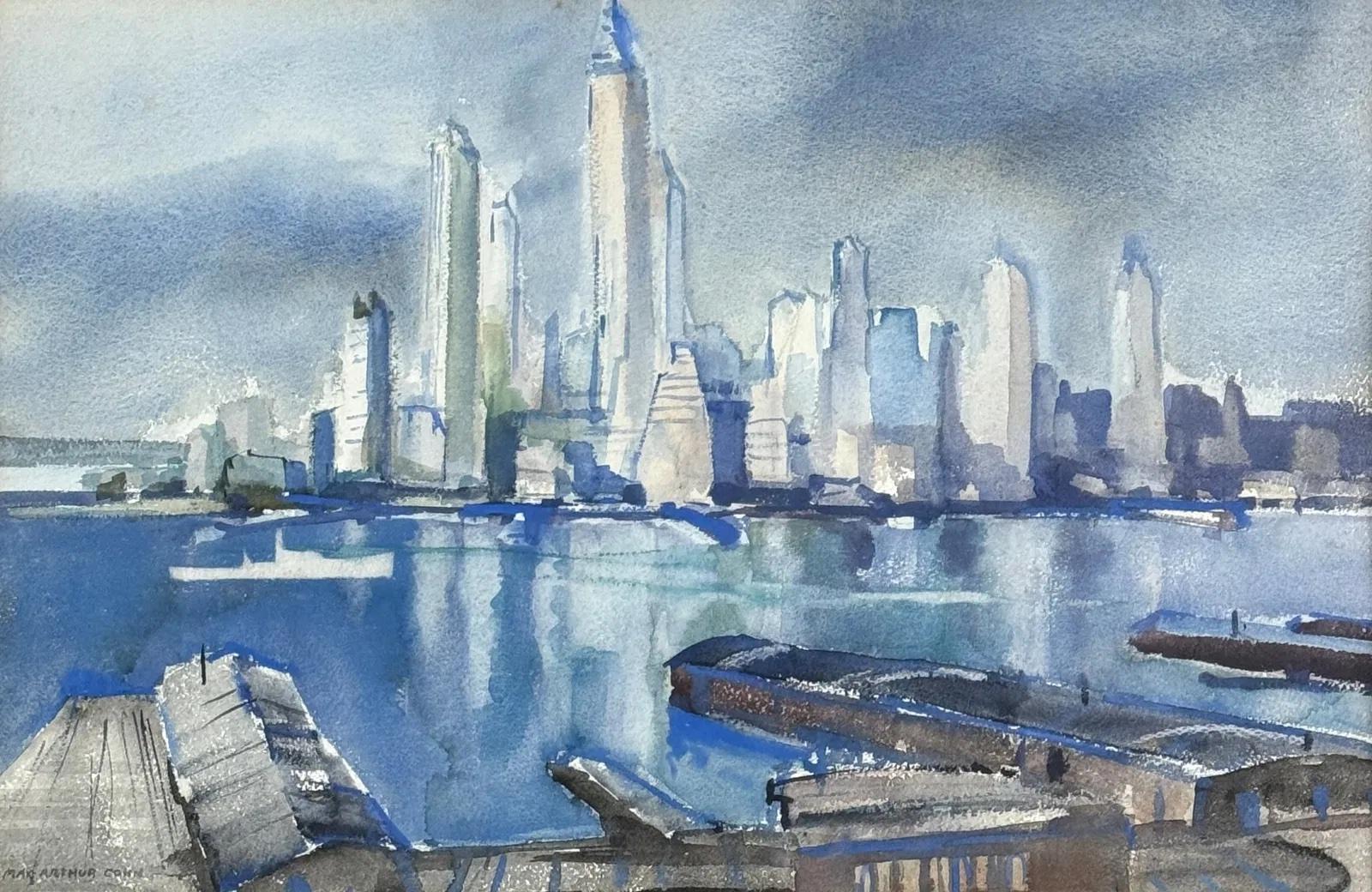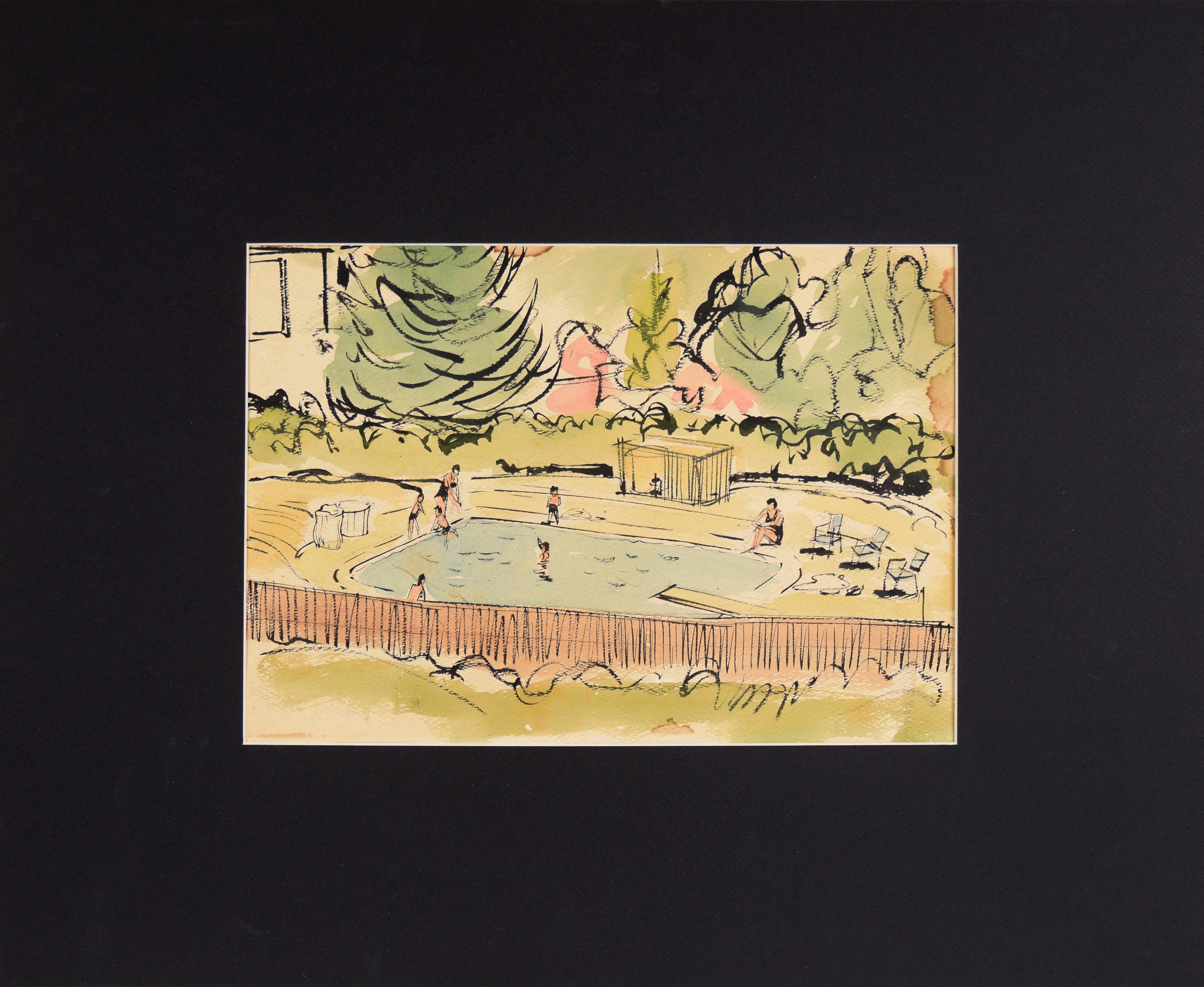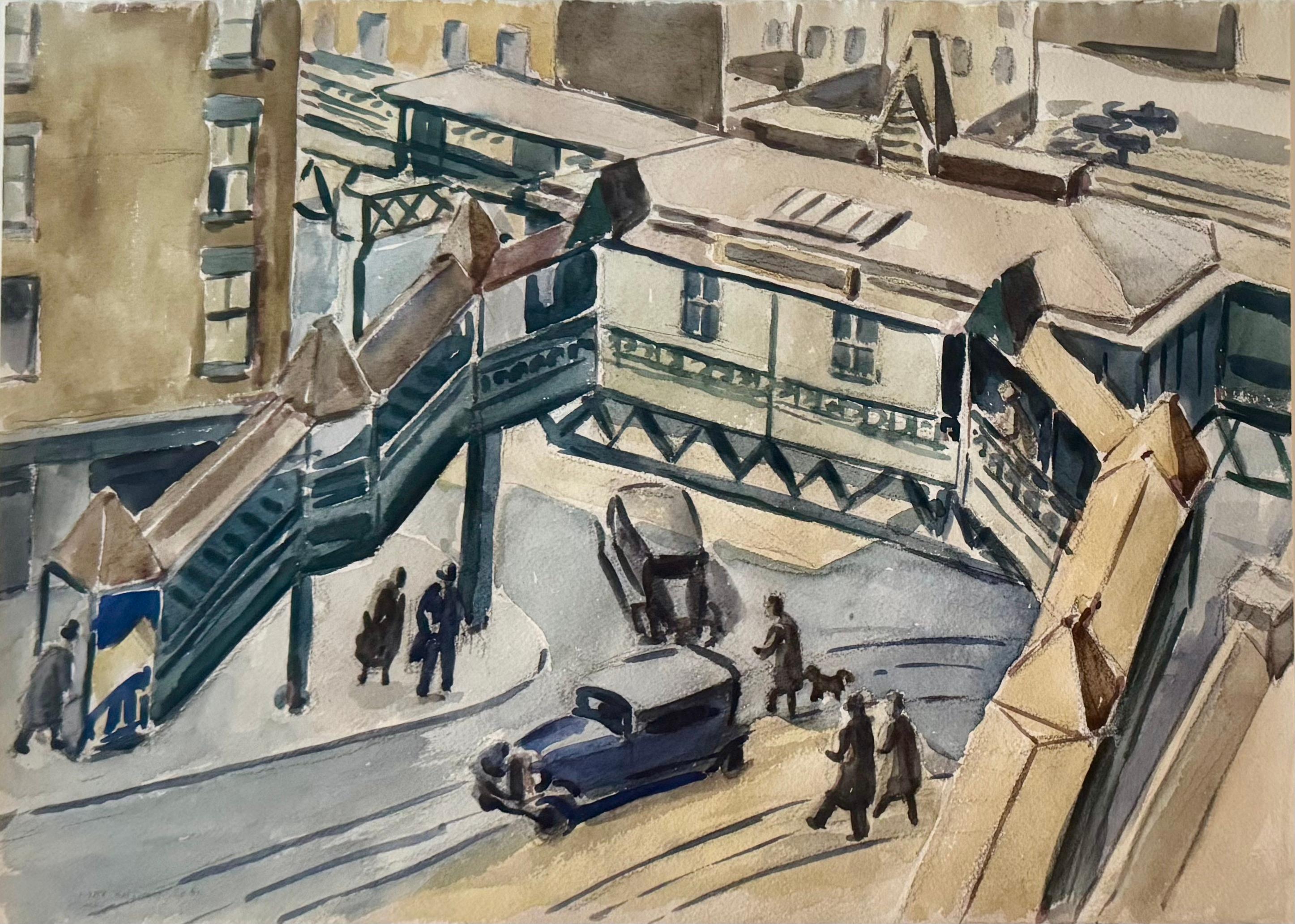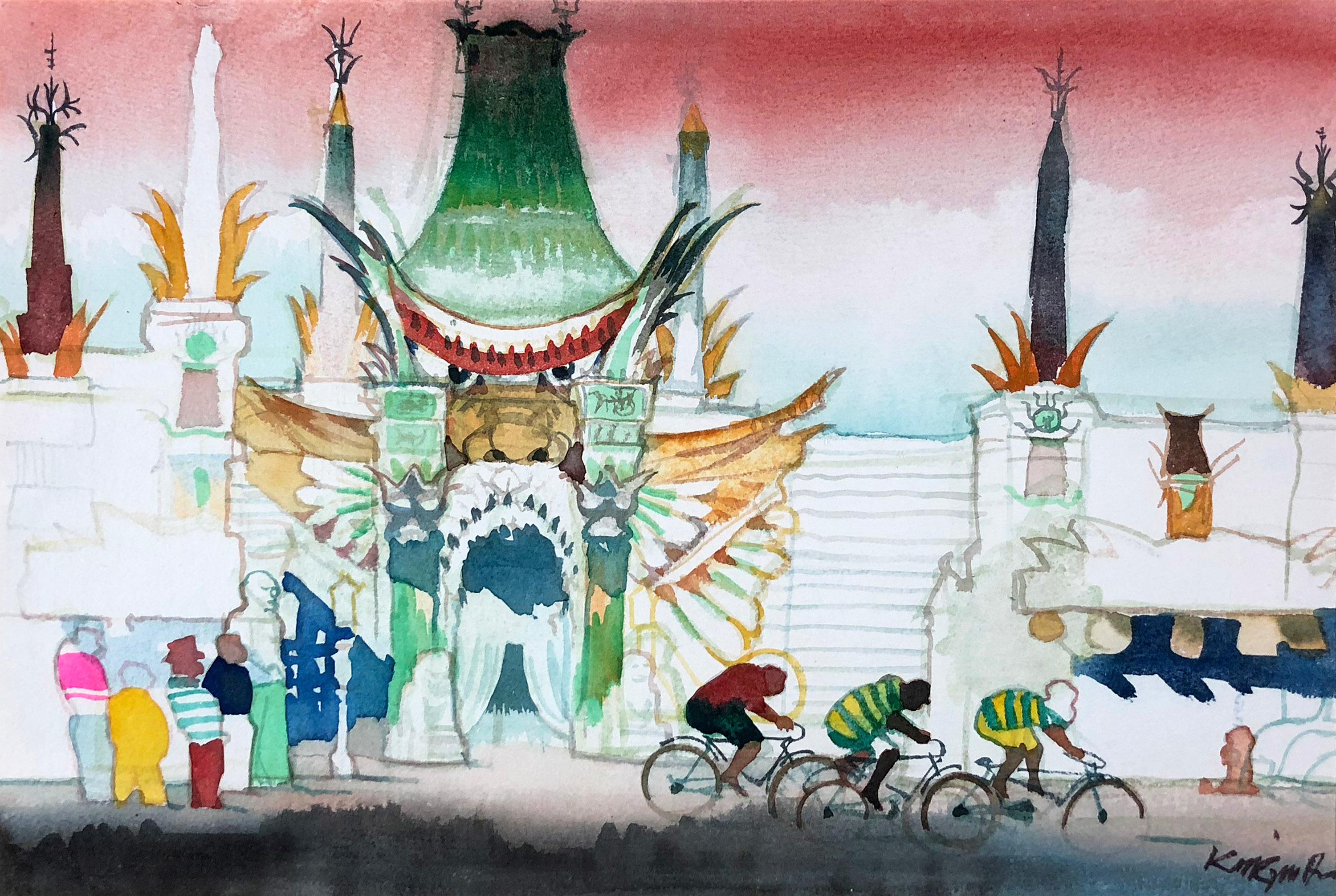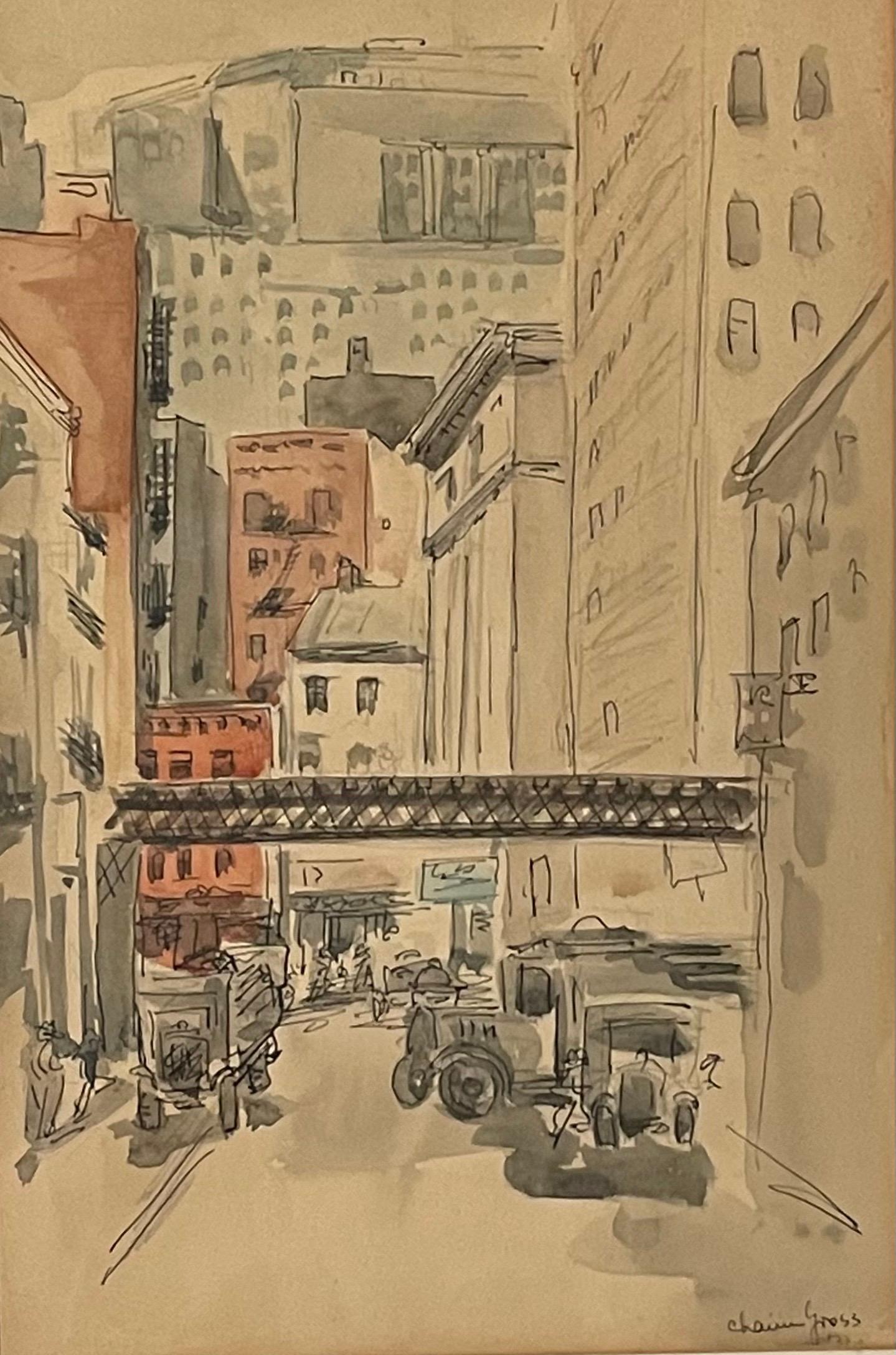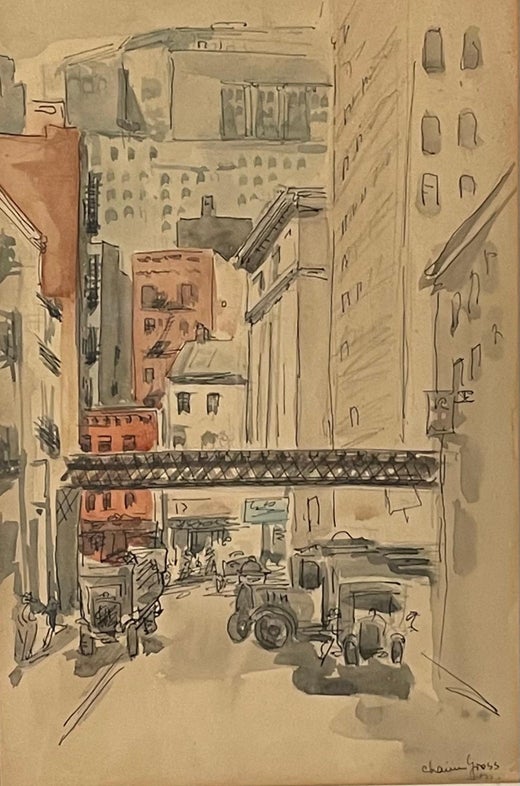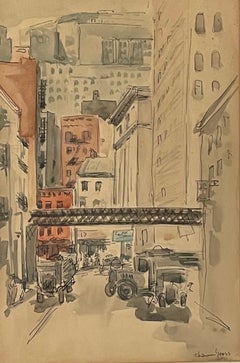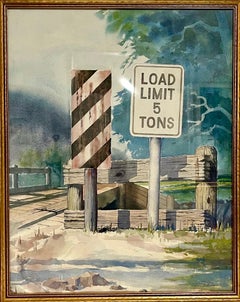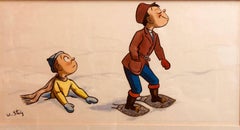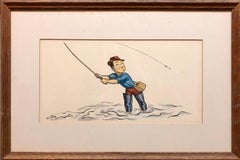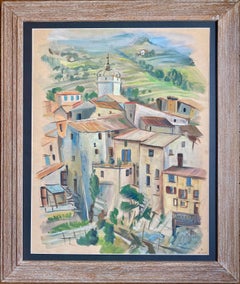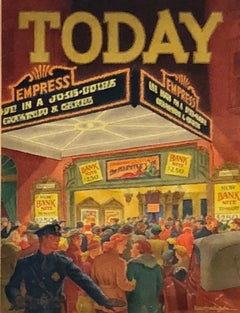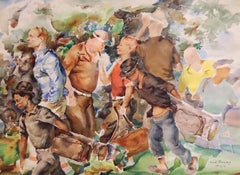
Rare Chaim Gross Watercolor Painting Manhattan Skyscrapers Train NYC WPA Artist
View Similar Items
Chaim GrossRare Chaim Gross Watercolor Painting Manhattan Skyscrapers Train NYC WPA Artistc.1920s
c.1920s
About the Item
- Creator:Chaim Gross (1904-1991, American)
- Creation Year:c.1920s
- Dimensions:Height: 22.5 in (57.15 cm)Width: 18 in (45.72 cm)
- Medium:
- Movement & Style:
- Period:
- Condition:
- Gallery Location:Surfside, FL
- Reference Number:1stDibs: LU3829265582
Chaim Gross
Chaim Gross was one of the most important American sculptors of the 20th century. Along with other noted sculptors William Zorach and Jose de Creeft, Gross was primarily a practitioner of the direct carving method, and a majority of his work was carved from wood. Born in Ukraine in 1904, Gross studied at the art academy in Budapest under painter Béla Uitz, followed by art studies at the Kunstgewerbeschule in Vienna. He immigrated to the United States with two of his brothers in 1921 and continued his studies at the Beaux-Arts Institute of Design with Elie Nadelman and others, and the Art Students League with sculptor and direct carver Robert Laurent. He also attended the Educational Alliance Art School at the same time as Peter Blume, Adolph Gottlieb and Moses and Raphael Soyer. Thereafter, Gross began an illustrious career that included important public commissions via his work for the Works Progress Administration and solo and group shows at prestigious galleries and museums such as the Whitney and the Smithsonian. Gross was also recognized with a silver medal at the Exposition Universelle de 1937 in Paris and 1942 with a purchase prize at the Metropolitan Museum of Art’s Artists for Victory exhibition for his wood sculpture of famed circus performer Lillian Leitzel. Gross also had a long career as a professor of printmaking and sculpture at various institutions including the The New School for Social Research, Art Students League and New Art School (which Gross ran briefly with fellow artists Alexander Dobkin and Moses and Raphael Soyer). But he had his longest tenure of 50 years as a professor at his alma mater, the Educational Alliance Art School, where he taught Louise Nevelson in 1934 and helped guide her transition from painter to one of the most important female sculptors of her generation. Gross received multiple honorary doctorates in the 70s and 80s and his work can be found in major museums and private collections throughout the United States, with substantial holdings at the Hirshhorn Museum and Sculpture Garden in Washington DC. Gross died in 1991.
More From This Seller
View AllMid-20th Century American Modern Figurative Drawings and Watercolors
Paper, Watercolor
Mid-20th Century American Modern Figurative Drawings and Watercolors
Watercolor
1930s American Modern Figurative Drawings and Watercolors
India Ink, Watercolor, Illustration Board
1930s American Modern Figurative Drawings and Watercolors
India Ink, Watercolor, Illustration Board
Mid-20th Century American Modern Figurative Drawings and Watercolors
Paper, Conté, Crayon
1930s Naturalistic Figurative Drawings and Watercolors
Archival Ink, Watercolor, Illustration Board
You May Also Like
Mid-19th Century American Modern Landscape Drawings and Watercolors
Watercolor, Gouache, Handmade Paper
1980s American Modern Figurative Drawings and Watercolors
Watercolor, Paper
1930s American Modern Figurative Drawings and Watercolors
Paper, Ink, Watercolor, Gouache
1920s American Modern Figurative Drawings and Watercolors
Paper, Watercolor
21st Century and Contemporary American Modern Landscape Drawings and Wat...
Ink, Watercolor, Laid Paper
1930s American Modern Figurative Drawings and Watercolors
Paper, Watercolor
